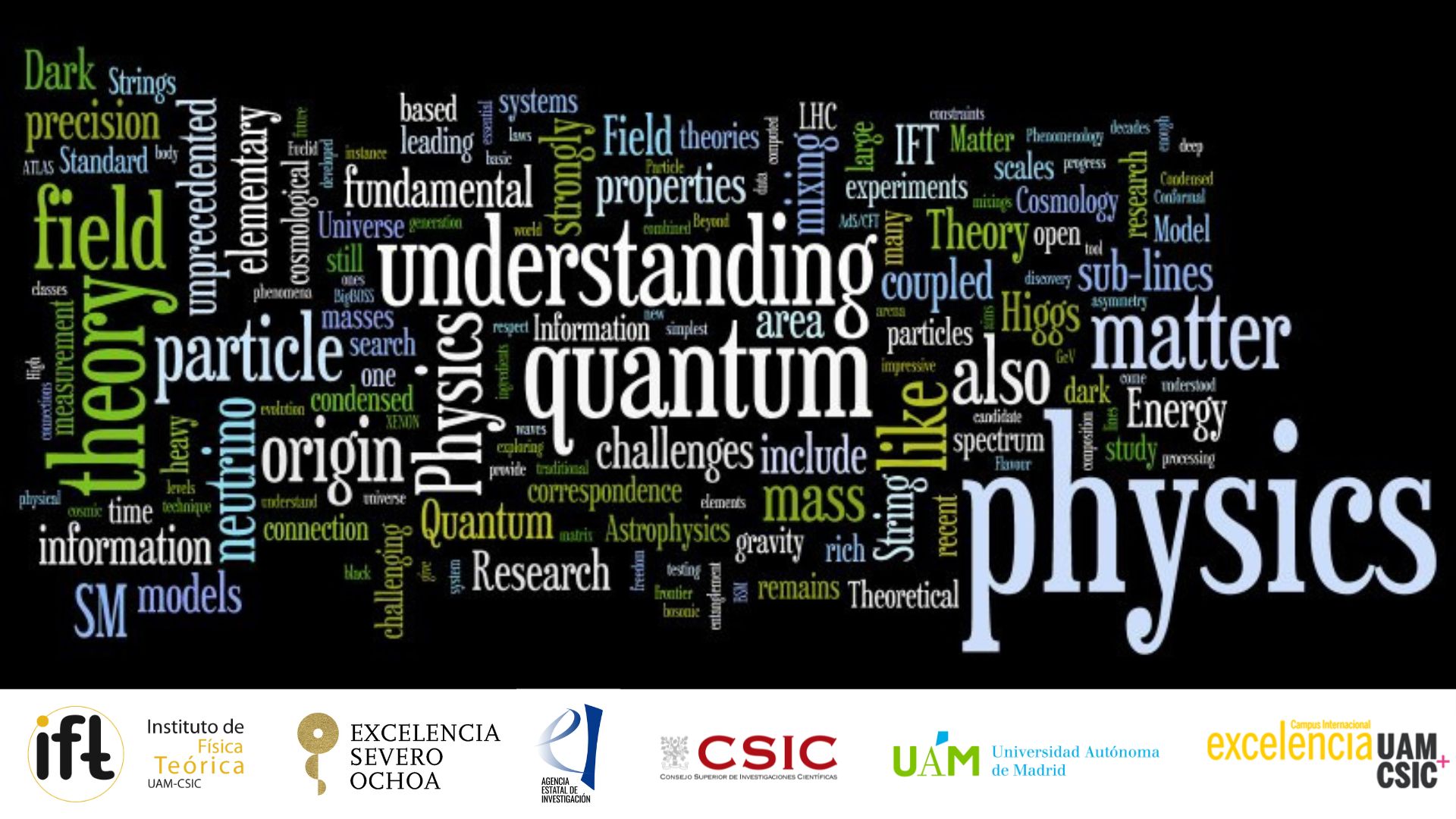Centro de Excelencia Severo Ochoa
Menú
Buscar

Online Webinar
If the length scale of possible extra dimensions is large enough, the fundamental Planck scale is lowered such that microscopic black holes could be produced in collisions of high-energy particles, which opens up a plethora of novel phenomena in terrestrial detectors and in the early Universe. Microscopic black holes from high-energy cosmic neutrino-nucleon collisions are characterized by unique topologies, distinct energy distributions and unusual ratios of hadronic-to-electronic energy deposition, visible through Cherenkov light echos due to delayed neutron recombination in IceCube-like detectors. In addition, these black holes evaporate through the emission of all particles that are kinematically and thermally allowed, including dark matter. This enables us to study the properties of dark sector from the missing momentum signatures at the next generation of colliders, regardless of the strength of the coupling between dark matter and the Standard Model. The microscopic black holes may account for part or all the dark matter relic density today and leave imprints on CMB, BBN and gamma ray background. Cosmological observations can serve as powerful tools to constrain the fundamental scale and the reheating temperature in the early universe.
Social media